Two years ago, i blogged about BioWall, a wall that pulsates beneath people’s fingers, repairs itself and even selfreplicates. Rachel Wingfield has come up with a different concept of BioWall. This one is a hand woven 3D structure that can be crafted into lace-like surfaces of any dimension and form. Fiberglass rods are bowed into rings and woven together to form a strong and flexible tension-compression system. The structure is based on the principle of self-similarity enabling it to work from the nano to the macro scale. It can be seen in our natural environment in the formation of bubbles, living cells and water molecules.
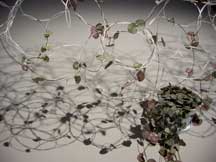
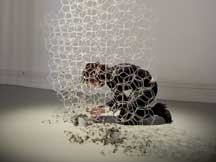
With plants living and growing around the structure, BioWall can become an indoor wall that divides space and cleans the air of the room.
BioWall invites individuals to craft their environment and understand and use the geometries of life. A new design practice can be realised through observing and learning from botanical life, cooperating with it rather than working towards its extermination. Photosynthesis, growth, phylotaxis and response to stimuli provide a strong framework for creating reactive surfaces.
Check BioWall at HauteGREEN, an exhibition of the best in sustainable design, May 20-22, 12-7pm – 70 North 6th Street, Williamsburg, Brooklyn.
This Spring, the New British Designers exhibition at droog@home was also showing the BioWall as well as two other works by Loop.ph.
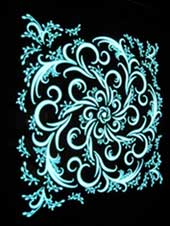
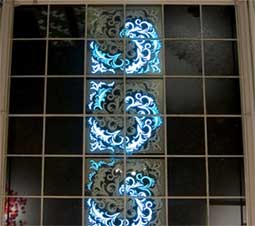 Weather Patterns are window units which emit light at night and allow sunlight to reflect during daytime. They contain printed electroluminescence panels sandwiched between glass and a mirror. A computer reads data from a dedicated weather station on site and uses this information to animate the printer EL pattern. that allow a building to communicate the changing weather cycles in the hours of darkness. (video)
Weather Patterns are window units which emit light at night and allow sunlight to reflect during daytime. They contain printed electroluminescence panels sandwiched between glass and a mirror. A computer reads data from a dedicated weather station on site and uses this information to animate the printer EL pattern. that allow a building to communicate the changing weather cycles in the hours of darkness. (video)
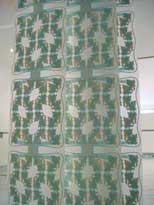
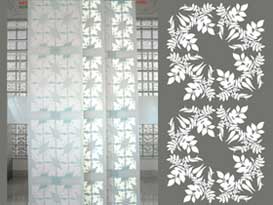 Blumen Wallpaper uses again electroluminescent technology in an ornate printed design that is at the same time a working electrical circuit. The repeating pattern allows the piece to be cut into smaller sections and even reassembled. Sensors in the wallpaper respond to various external stimuli and make the pattern react to its environment. For example, patterns in the sound environment can be transformed into visual patterns on the wallpaper. (video)
Blumen Wallpaper uses again electroluminescent technology in an ornate printed design that is at the same time a working electrical circuit. The repeating pattern allows the piece to be cut into smaller sections and even reassembled. Sensors in the wallpaper respond to various external stimuli and make the pattern react to its environment. For example, patterns in the sound environment can be transformed into visual patterns on the wallpaper. (video)
On flickr, some rather lame pictures i took of loop.PH’s work.
Also by Rachel Wingfield: Emotional fabrics, The wake up duvet.
